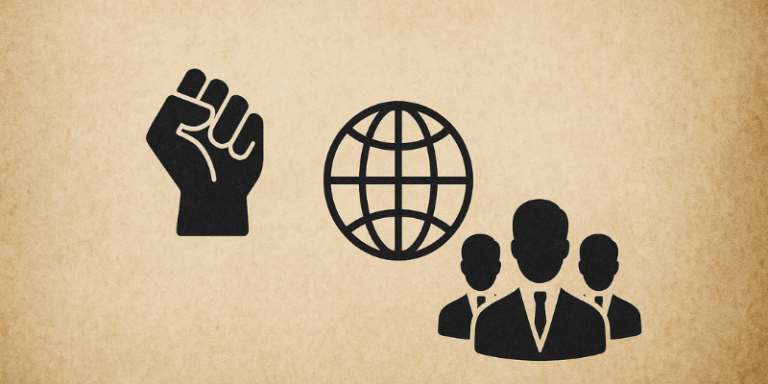Realism remains one of the most enduring and influential theories in the field of international relations (IR). Rooted in a pragmatic and often sceptical view of human nature and international politics, realism posits that states operate in an anarchic international system where their primary concern is survival, achieved through the accumulation of power. This article explores the key tenets of realism, its historical development, main proponents, critiques, and its continued relevance in contemporary global affairs.
Foundational Concepts of Realism
At the core of realism lies the assumption that the international system is anarchic, meaning that there is no overarching authority above states (Dunne and Schmidt, 2017). This condition of anarchy compels states to prioritise their own security and national interest. States are considered the principal actors in international relations, and their behaviour is guided primarily by the pursuit of power and the need to ensure their survival (Morgenthau, 1948).
Hans Morgenthau, one of the leading classical realists, emphasised the concept of power politics, asserting that “international politics, like all politics, is a struggle for power” (Morgenthau, 1948, p. 13). This perspective underscores a key feature of realism: the belief in an inherent conflictual nature of international relations.
Variants of Realism
Realism is not a monolithic theory; it has evolved into several variants, including classical realism, neorealism (also known as structural realism), and more contemporary forms like neoclassical realism.
Classical realism draws heavily from historical and philosophical roots, with thinkers such as Thucydides, Machiavelli, and Hobbes influencing its core ideas. It attributes the drive for power to human nature and suggests that the quest for dominance is an intrinsic aspect of humanity (Baylis, Smith and Owens, 2020).
Neorealism, introduced by Kenneth Waltz in his seminal work Theory of International Politics (1979), shifts the focus from human nature to the structure of the international system. Waltz argues that it is the anarchic nature of the international system and the distribution of capabilities among states that shape state behaviour, not innate human impulses.
Neoclassical realism attempts to bridge the gap between classical realism and neorealism by incorporating both systemic factors and domestic-level variables. This approach acknowledges that internal characteristics, such as state leadership and national identity, also influence foreign policy decisions (Rose, 1998).
Key Assumptions and Principles
Realism rests on several core assumptions:
- State-centrism: States are the most important units in international politics.
- Rationality: States act as rational actors, seeking to maximise their interests.
- Survival: The primary goal of each state is to ensure its own survival.
- Power and Security: Power, particularly military power, is the means through which states achieve security.
These principles contribute to a worldview where cooperation is limited, alliances are temporary and based on self-interest, and conflict is seen as inevitable.
Realism and International Conflict
Realism has been particularly influential in explaining international conflict and war. The theory’s focus on power struggles and security dilemmas provides a framework for understanding conflicts such as the Cold War. The arms race between the United States and the Soviet Union can be seen through a realist lens as a classic example of states seeking to balance power and deter threats (Mearsheimer, 2001).
John Mearsheimer, a prominent offensive realist, argues that great powers are always seeking to maximise their share of world power, often at the expense of others. He contends that international politics is a zero-sum game where the gain of one state is often the loss of another (Mearsheimer, 2001).
Critiques of Realism
Despite its enduring popularity, realism has faced substantial criticism. Liberal theorists argue that realism underestimates the potential for cooperation and the role of international institutions (Keohane and Nye, 1989). Constructivists challenge realism’s materialistic outlook, asserting that international relations are socially constructed and influenced by ideational factors such as identity, norms, and discourse (Wendt, 1992).
Feminist scholars have also critiqued realism for its gendered assumptions and for ignoring the role of women and gender dynamics in international relations (Tickner, 1992). Furthermore, realism’s emphasis on state-centric analysis has been questioned in light of globalisation and the rise of non-state actors such as multinational corporations and international organisations.
Realism in the 21st Century
Despite criticisms, realism continues to offer valuable insights into contemporary international politics. The rise of China, for example, has been analysed through realist frameworks. Scholars argue that the United States’ strategic pivot to Asia and the resulting tensions in the South China Sea reflect classic realist dynamics of power transition and balance of power politics (Friedberg, 2011).
Similarly, Russia’s annexation of Crimea and its involvement in Ukraine can be interpreted as a response to perceived threats from NATO expansion and an attempt to reassert its influence in the region (Walt, 2015). These examples demonstrate that realism remains a pertinent analytical tool for understanding geopolitical rivalry and state behaviour.
Realism has made a profound contribution to the study of international relations by highlighting the enduring role of power, conflict, and the anarchic nature of the international system. While it has evolved into various strands and faces ongoing critiques, its core assumptions continue to resonate in an increasingly uncertain world. As global politics remain fraught with competition and strategic manoeuvring, realism’s emphasis on state behaviour and power dynamics ensures its continued relevance in both theory and practice.
References
Baylis, J., Smith, S. and Owens, P. (2020) The Globalization of World Politics: An Introduction to International Relations. 8th edn. Oxford: Oxford University Press.
Dunne, T. and Schmidt, B. C. (2017) ‘Realism’, in Baylis, J., Smith, S. and Owens, P. (eds.) The Globalization of World Politics. 7th edn. Oxford: Oxford University Press, pp. 100-113.
Friedberg, A. L. (2011) A Contest for Supremacy: China, America, and the Struggle for Mastery in Asia. New York: W. W. Norton & Company.
Keohane, R. O. and Nye, J. S. (1989) Power and Interdependence. 2nd edn. Boston: Little, Brown.
Mearsheimer, J. J. (2001) The Tragedy of Great Power Politics. New York: W. W. Norton & Company.
Morgenthau, H. J. (1948) Politics Among Nations: The Struggle for Power and Peace. New York: Alfred A. Knopf.
Rose, G. (1998) ‘Neoclassical Realism and Theories of Foreign Policy’, World Politics, 51(1), pp. 144-172.
Tickner, J. A. (1992) Gender in International Relations: Feminist Perspectives on Achieving Global Security. New York: Columbia University Press.
Walt, S. M. (2015) ‘The Ukraine Crisis and the Resumption of Great-Power Rivalry’, Foreign Affairs, 94(4), pp. 77-84.
Waltz, K. N. (1979) Theory of International Politics. Reading, MA: Addison-Wesley.
Wendt, A. (1992) ‘Anarchy is What States Make of It: The Social Construction of Power Politics’, International Organization, 46(2), pp. 391-425.









